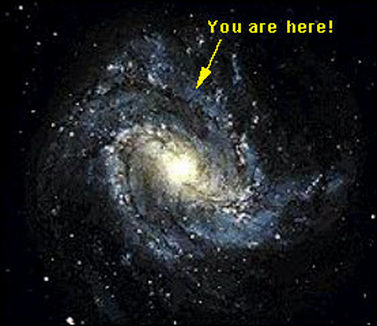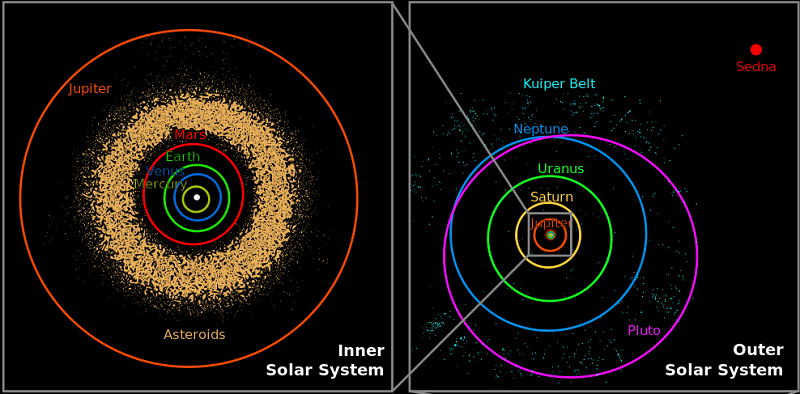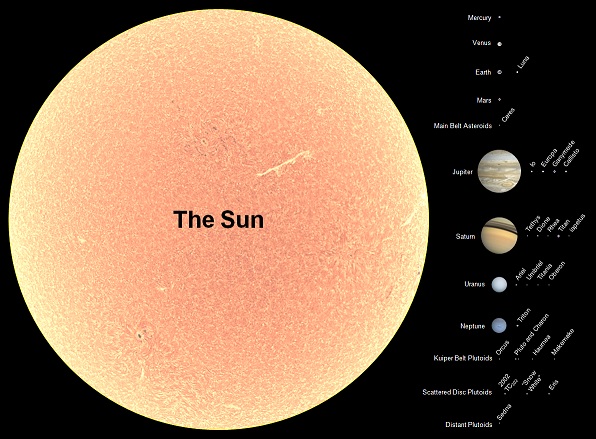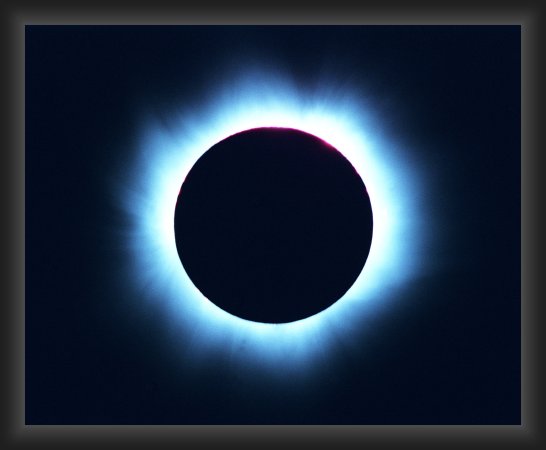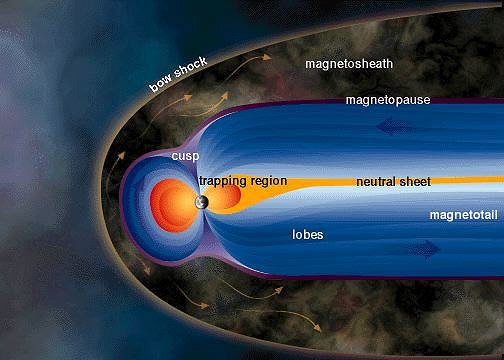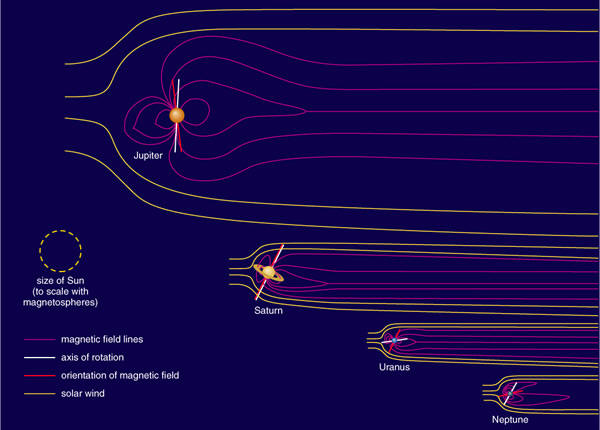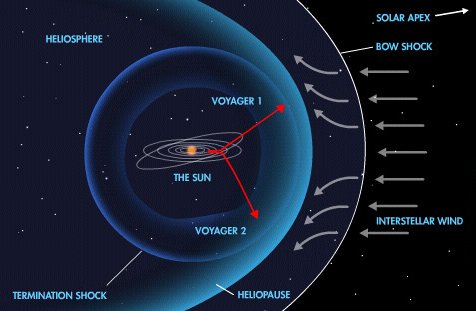Return to Astronomy Introduction
Our Solar System -- What We See
Our solar system is a very small part of our whole Milky Way Galaxy. We are in one of its spiral arms.
Our solar system is made up of five parts: the sun, the inner four planets, the outer four planets, the asteroid belt and the Kuiper belt.
The illustration below shows the relative sizes a little more clearly.
If you look very hard next to the earth, you will see a tiny dot. That is our moon. Then why can the moon block the sun during an eclipse? Pick up a leaf. Hold it up and see how much of a distant tree you can block out with the leaf. Does that mean the leaf is bigger than the tree? We are far enough away from the sun for the moon to look like it is the same size to us. That is why the moon can cover the sun during a solar eclipse
Understanding that distance really makes things look smaller, let’s look at some of the sizes in numbers:
Here's something to try to help you understand these distances: How far would you have to back up from the sun (if it were 10.5 feet across) so that the moon (1/4 inch across) could cover it? Try it. It will take more than your yard. It will take more than a store's parking lot. Mark off a colored tape along two posts that are 10.5 feet apart, and walk down a long, straight road with your quarter inch moon. Keep trying to block out the tape with the moon. That will give you an idea of how far our moon is from our sun. Every planet in our solar system is surrounded by an ionosphere, also known as a plasma sphere or an magnetosphere. This is a very large surround of ionized gases which deflects the solar wind away from the planets themselves.
Ions are atoms which have been stripped of one or more electrons. This produces a positive charge in the atom itself and the freed electrons produce negative charges. This is also known as 'plasma' or the fourth state of matter. The Plasma Model explains this more fully. The bow shock is where the solar wind hits the front of the plasma sphere and is deflected to the sides. The solar wind is a positively charged electric current, primarily protons. The planet's own magnetic field (giving it a north and south pole) results in weak spots where some solar wind can enter. These are called cusps. When the solar wind is strong enough due to some kind of 'burst' from the sun (see below), then the planet's plasma sphere at the poles will react to the added electric current and go into glow mode and show up as auroras. Every electric current is surrounded by a magnetic field circling it. This is explained in the Plasma Model, linked in the previous paragraph. An electric current is either negative, involving a stream of moving electrons or positive, involving a stream of moving ions or protons. If there were no solar wind, the magnetosheath would be in a large globe around the planet. However the force from the solar wind causes it to stream out behind the planet like a giant wind sock. The magnetopause is where the interaction with the solar wind actually stops, and then we proceed further in to the lobes and magnetotail, which are the streaming parts of the magnetosphere (plasmasphere). The trapping region is where ions are trapped. The planet's magnetic field itself produces the trapping region where electrons and ions spiral around the planet itself, again showing dips or weaknesses at the two poles. The narrow neutral sheet is a merging of the magnetic fields of the north and south poles where there is no positive or negative charge. The plasma sphere/ionosphere tails stream out for exceedingly long distances and the next planet out is quite capable of passing through it. Saturn can pass through Jupiter's; we can pass through Venus'; Mars can pass through ours, etc. It is important to note that there are three names for these things: ionospheres, magnetospheres, and plasma spheres. All are correct.
Not only does each planet have its own plasma sphere, our entire solar system is surrounded by a very large one, which is the sun's plasma sphere. It is called a heliosphere.
The solar apex is the direction in which the solar system is moving in space. The interstellar wind is similar to the solar wind from the sun. It is the combination of the output of the various stars in our part of the Milky Way Galaxy and the interstellar magnetic field. The bow shock is where the interstellar wind hits and is forced around the solar system. The heliopause is where interaction with the interstellar wind stops. The heliosphere is explained well by Wikipedia:
|
